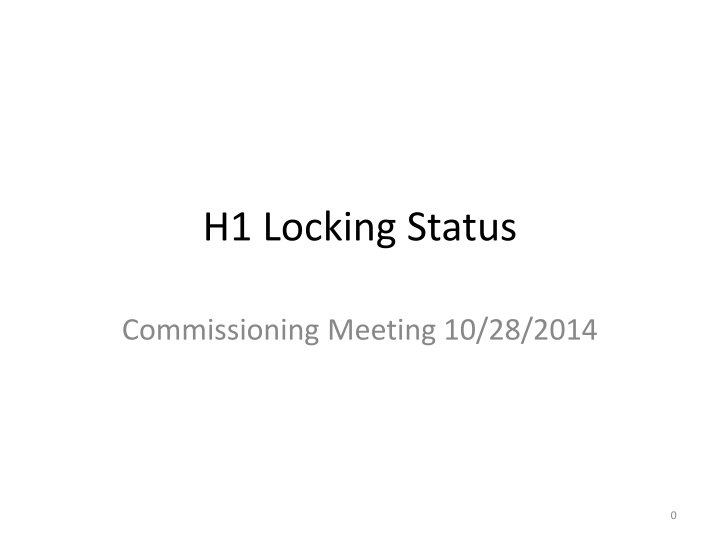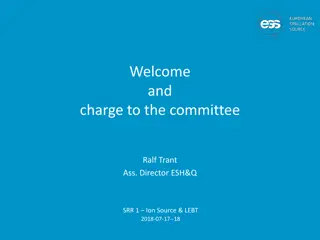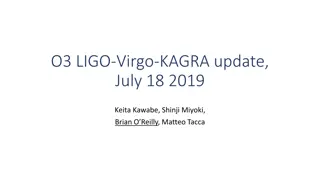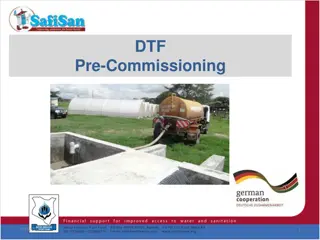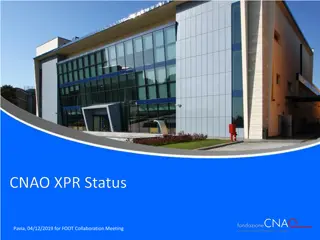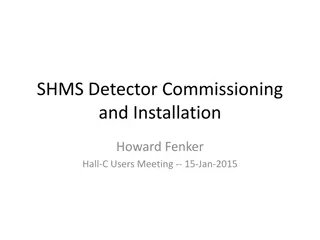Locking Status Commissioning Meeting 10/28/2014
Downtime and locking duration improvements observed in the commissioning meeting on 10/28/2014. Factors contributing to the increased locking duration identified with solutions applied. Further updates on ALS status and arms locking discussed. PRC and ASC optimizations made for stable locking.
Download Presentation

Please find below an Image/Link to download the presentation.
The content on the website is provided AS IS for your information and personal use only. It may not be sold, licensed, or shared on other websites without obtaining consent from the author.If you encounter any issues during the download, it is possible that the publisher has removed the file from their server.
You are allowed to download the files provided on this website for personal or commercial use, subject to the condition that they are used lawfully. All files are the property of their respective owners.
The content on the website is provided AS IS for your information and personal use only. It may not be sold, licensed, or shared on other websites without obtaining consent from the author.
E N D
Presentation Transcript
H1 Locking Status Commissioning Meeting 10/28/2014 0
DRMI Status Downtime and locking duration have both improved dramatically. The downtime has been reduced due to changes in the loop shape and gains, and adjusting the triggering thresholds (alog 14622) The increased locking duration (~4 hrs) is probably due to several factors: Better alignment Less PRC clipping Less BS oplev noise ASC loops There is still some SRCL mode hopping; however, the frequency of these hops occurring is much less, and it doesn t always cause a lock loss. Succeeded in transitioning from 1f to 3f 1
DRMI Signals PRCL SRCL MICH 1F Signal REFLAIR_A_RF9_I REFLAIR_A_RF45_I & REFLAIR_A_RF9_I * ASAIR_A_RF45_Q 3F Signal REFLAIR_B_RF27_I REFLAIR_B_RF135_I & REFLAIR_B_RF27_I * REFLAIR_B_RF135_Q Trigger POPAIR_B_RF18_I POPAIR_B_RF18_I POPAIR_B_RF18_I Optic PRM SRM BS UGF 1F 60 Hz 50 Hz 10 Hz UGF 3F 60 Hz 15 Hz 10 Hz * This is to decouple PRCL from SRCL. 2
ALS Status ALS COMM and DIFF are robust. ALS Guardians are in place. Noise spectra are consistent with HIFO-XY days (alog 14324) ETM tidal feedback was commissioned, but has not been tested recently and probably needs to be improved (alog 14412) 3
Arms + DRMI ALS COMM and DIFF were locked. IR was set 500 Hz off resonance (on either side), DRMI was locked, but we saw a more significant SRCL mode hopping; this was solved by putting a SRCL offset (alog 14654). With a COMM offset of ~120 Hz IR, the DRMI loses lock (alog 14433). 4
PRC PRMI locks stably. ASC WFS are commissioned. PRC recycling gain was originally measured to be 21 for 45 MHz sideband (alog 14532 , alog 14584). Determined there was beam clipping in yaw, possibly due to PR2 baffle (alog 14567, alog 14640, alog 14650) Improved the beam clipping, and the PRC recycling gain increased to 25. Still more room for improvement (alog 14611) since the recycling gain should be closer to 40. 5
ASC WFS loops are closed for PRMI (alog 14615) PRCL MICH Signal REFL_A_RF9_I AS_A_RF36_Q Optic PRM (M2 stage) BS (M2 stage) Need to measure input sensing matrix DRMI ASC loops are also closed PRCL MICH SRCL Signal REFL_A_RF9_I AS_A_RF36_Q AS_A_RF36_I Optic PRM (M2 stage) BS (M2 stage) SRM (M2 stage) Need to measure input sensing matrix Add feedback to PR2 6
DC Centering REFL_A_DC REFL_B_DC AS_A_DC AS_B_DC Optic RM1, RM2* RM2, RM1** OM2 OM3 These loops have been commissioned and are stable. An alternate way to center the ASC AS WFS at DC is by turning on the OMC QPD centering, which also uses OM1, OM2. (alog 14575, alog 14616) * RM2 is off diagonal term (factor of -0.86) ** RM1 is off-diagonal term (factor of -0.25)7
Initial Alignment All controlled by guardian, and usually runs fairly smoothly. Green WFS still in progress More details from Keita/Kiwamu 8
Some Next Steps (out of many) Work on more beam input pointing/alignment to increase power recycling gain Measure all the input sensing matrices for the ASC loops Now that the DRMI is more stable and reliable, we can try to reduce the COMM IR offset and transition from COMM handoff to IR in transmission Commissioning Calendar (alog 14636) 9
Appendix 10
DRMI Status (OLD) In the process of stabilizing this loop. At 10W, down time is approx 40 min. Once the cavity is locked we see mode hopping, which causes lock loss. Adjusting SCRL offset to -800 reduces the mode hopping (alog 14531). At 1W, the down time is shorter and the mode hopping is less significant. 14
